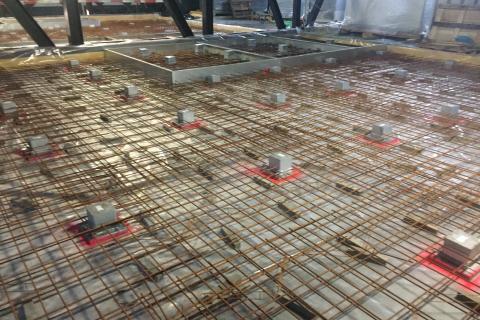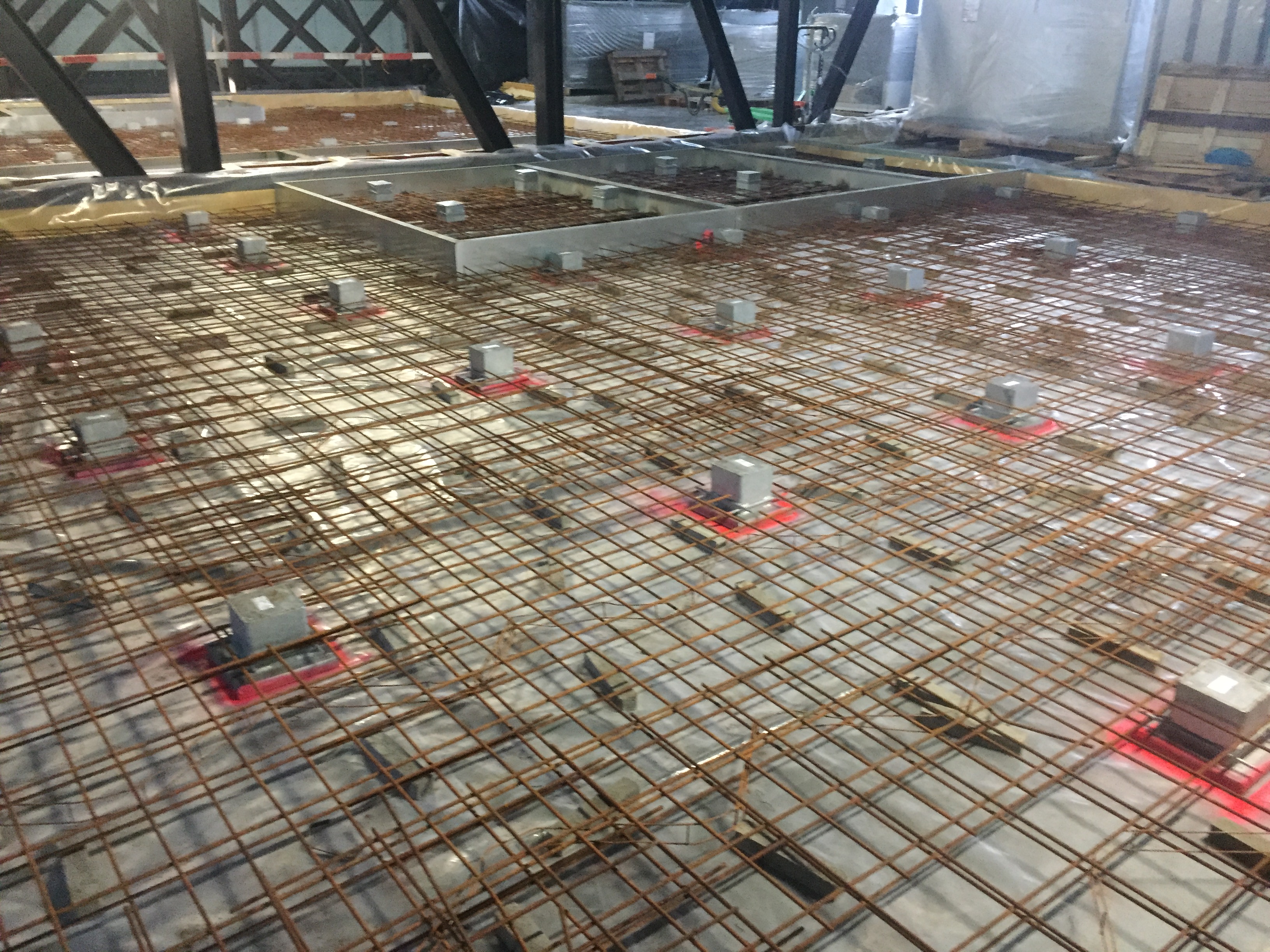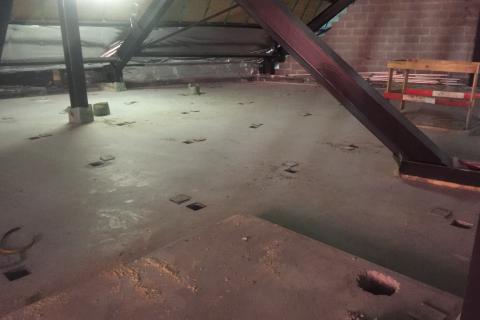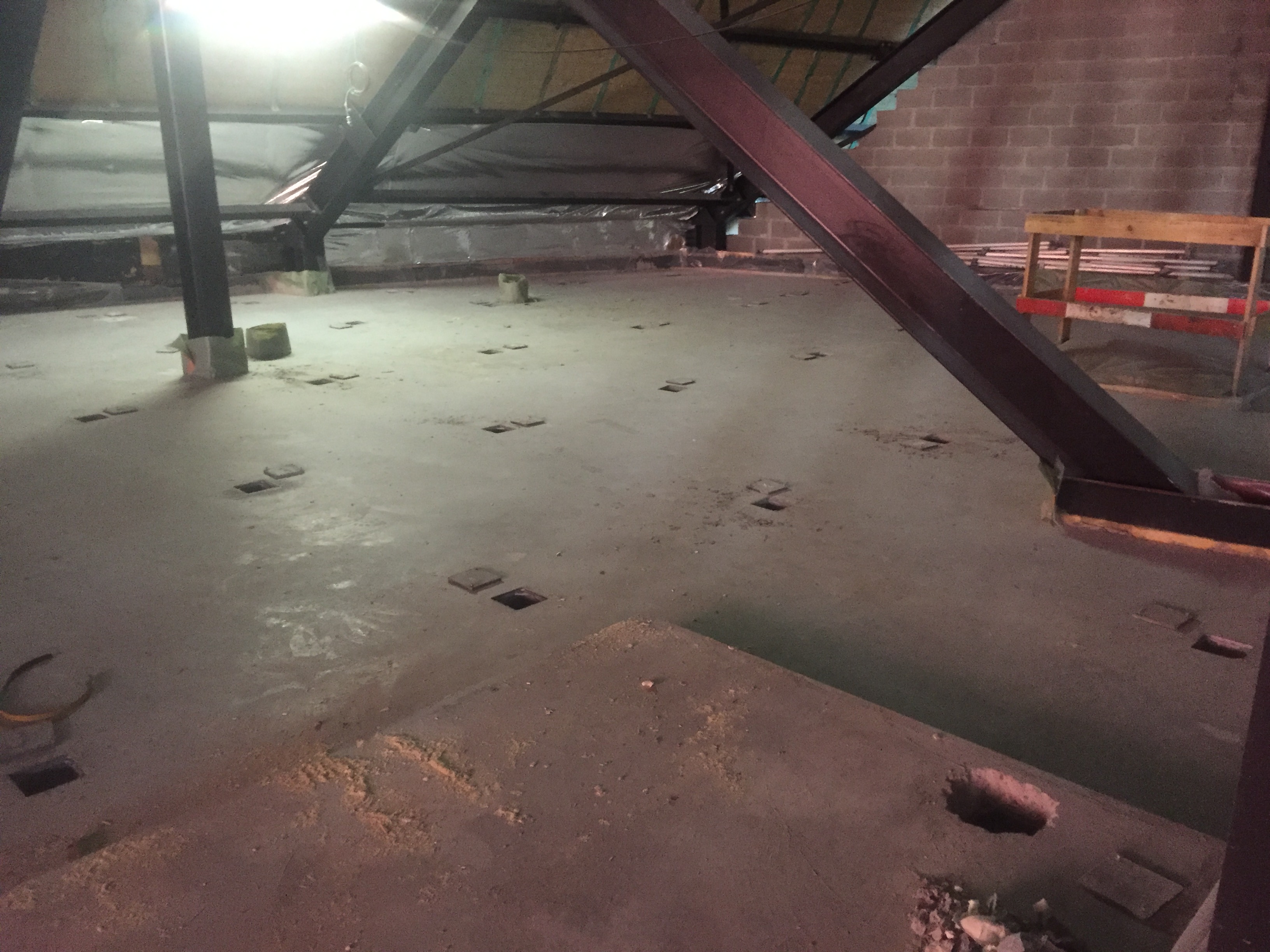
Main page content
Entity view (Content)
Elisabeth Center Antwerp

Entity view (Content)
The Elisabeth Center Antwerp, formerly know as the ‘Queen Elisabeth Hall’, did not live up to the acoustic expectations with a disappointing score of 6 out of 10. The clients for this project, the City of Antwerp and the Flemish Authorities, are looking forward to attracting international conferences to this new and multifunctional events hall. Thanks to its construction it can transform from a classical concert hall to a seminar room or theatre venue in practically no time, allowing it to house a maximum number of events yearly. The Elisabeth Centre will span a total of 25,000 m² and accommodate about 2,500 guests. The official opening is planned for end 2016.
To achieve nearly flawless acoustics in a large area, it is essential to drown out any noise. Situated just above the Centre’s large hall, the main technical area contains the heating, ventilation and air-conditioning installation on a floating concrete floor that covers that entire area. The floor itself is based on the Stravifloor Jackup floor system that consists of reinforced steel boxes cast into concrete. Each steel box contains rubber pads that are optimized in type and size to support the load they have to carry. In this case, that load is the sum of the floating floor itself plus the technical equipment. The rubber pads allow for fine-tuning: for each 1.8 m, in each direction, a rubber pad is used in order to limit the rubber contact points. The floor is divided into 8 parts that can be jacked up and adjusted independently. The rubber pads resonate at 8 to 10 Hz, creating a low frequency filter for all structural and contact noises.
The same jack-up floor system was installed in the large rehearsal room, as a complete box-in-box construction: the room’s (light-weight) walls are positioned at the edge of the floating floor and are disconnected at the back through elastomer bearings. The rubber pads in the boxes below the walls are different from the ones that are installed in the centre of the area. The lowered ceiling in this room is also acoustically decoupled. Thanks to the jack-up system, the rubber pads can later be replaced by steel springs, for example if the weight to be carried changes drastically in the future or if there’s a need for an even lower frequency filter. CDM Stravitec also provided a similar floating floor system (Stravifloor Prefab) at the Centre’s (un)loading area and installed a Stravifloor Mount floor system in the other rehearsal rooms.


